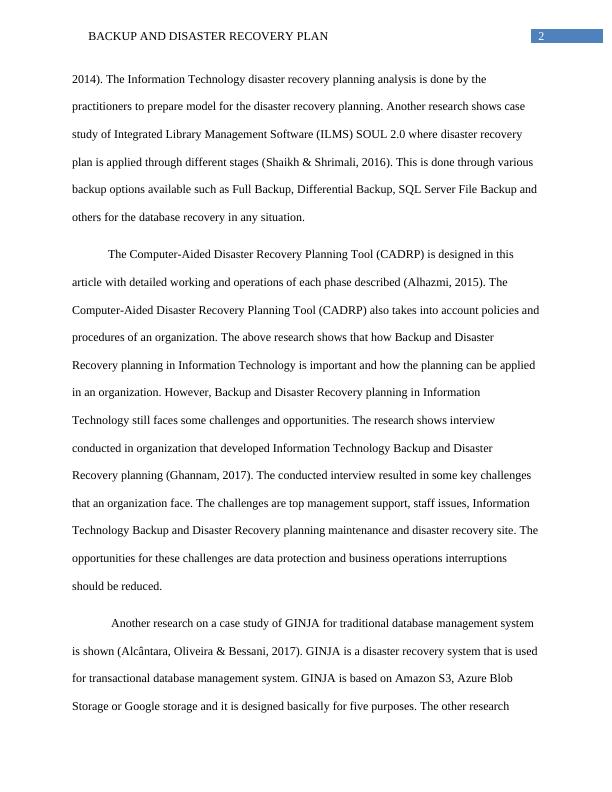Backup and Disaster Recovery Plan for Information Technology
This essay explores the challenges that small businesses face in setting up an e-commerce website and operating effectively. It discusses the research conducted on this topic, the variables that act as barriers or incentives, and the importance of understanding these factors for successful e-commerce implementation.
6 Pages1178 Words319 Views
Added on 2023-06-15
About This Document
This research paper discusses the importance of a backup and disaster recovery plan for Information Technology infrastructure. It elaborates on the challenges faced by organizations while implementing the plan and how cloud technologies can help overcome them. The paper includes research papers and case studies on the topic.
Backup and Disaster Recovery Plan for Information Technology
This essay explores the challenges that small businesses face in setting up an e-commerce website and operating effectively. It discusses the research conducted on this topic, the variables that act as barriers or incentives, and the importance of understanding these factors for successful e-commerce implementation.
Added on 2023-06-15
ShareRelated Documents
End of preview
Want to access all the pages? Upload your documents or become a member.
Backup and Disaster Recovery Plan: Challenges, Solutions, and Technologies
|9
|1798
|367
Discussion Paper: Backup and Disaster Recovery Plan
|6
|1559
|275
MITS Advanced Research Techniques - Assignment
|5
|1404
|16
Computer Information Systems Assignment
|3
|507
|43
Secure Computer Networks
|13
|2163
|176
ATA Backup Disaster Recovery Data
|7
|1179
|143



